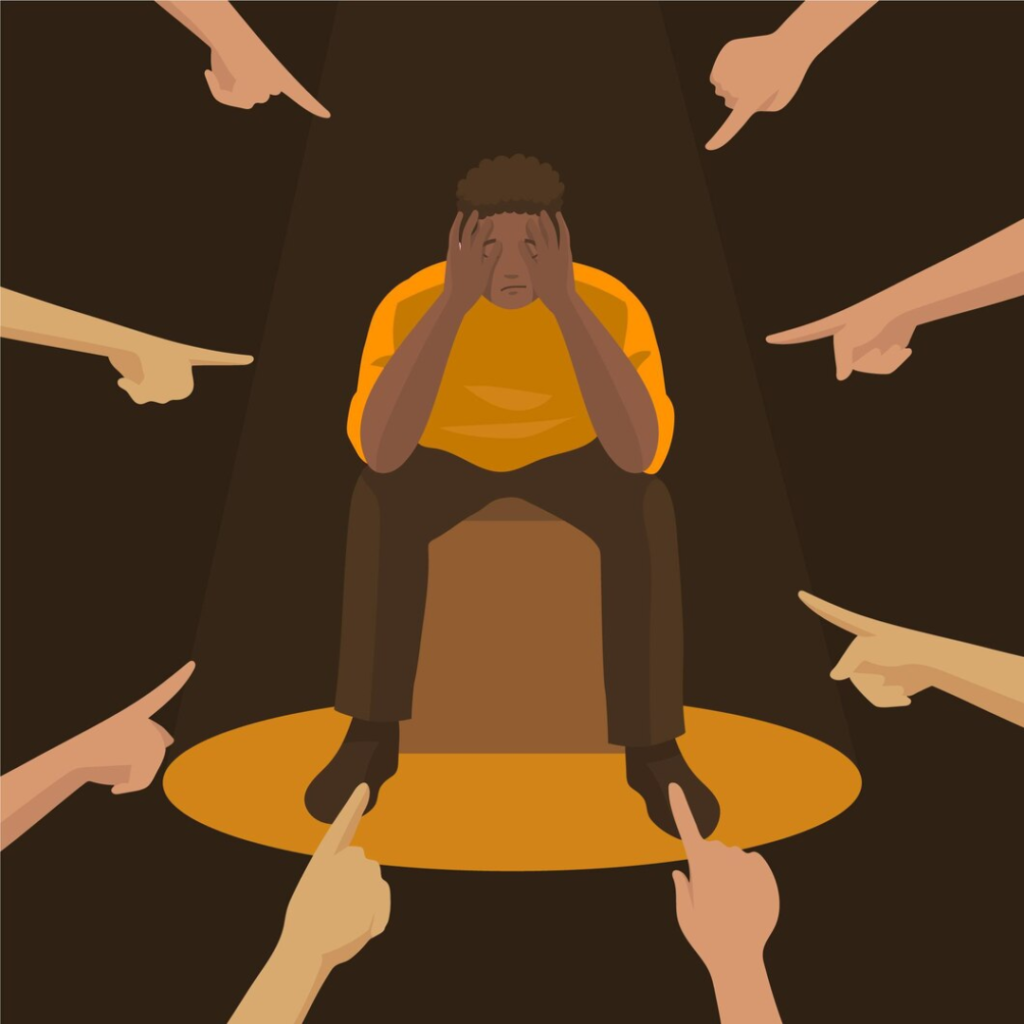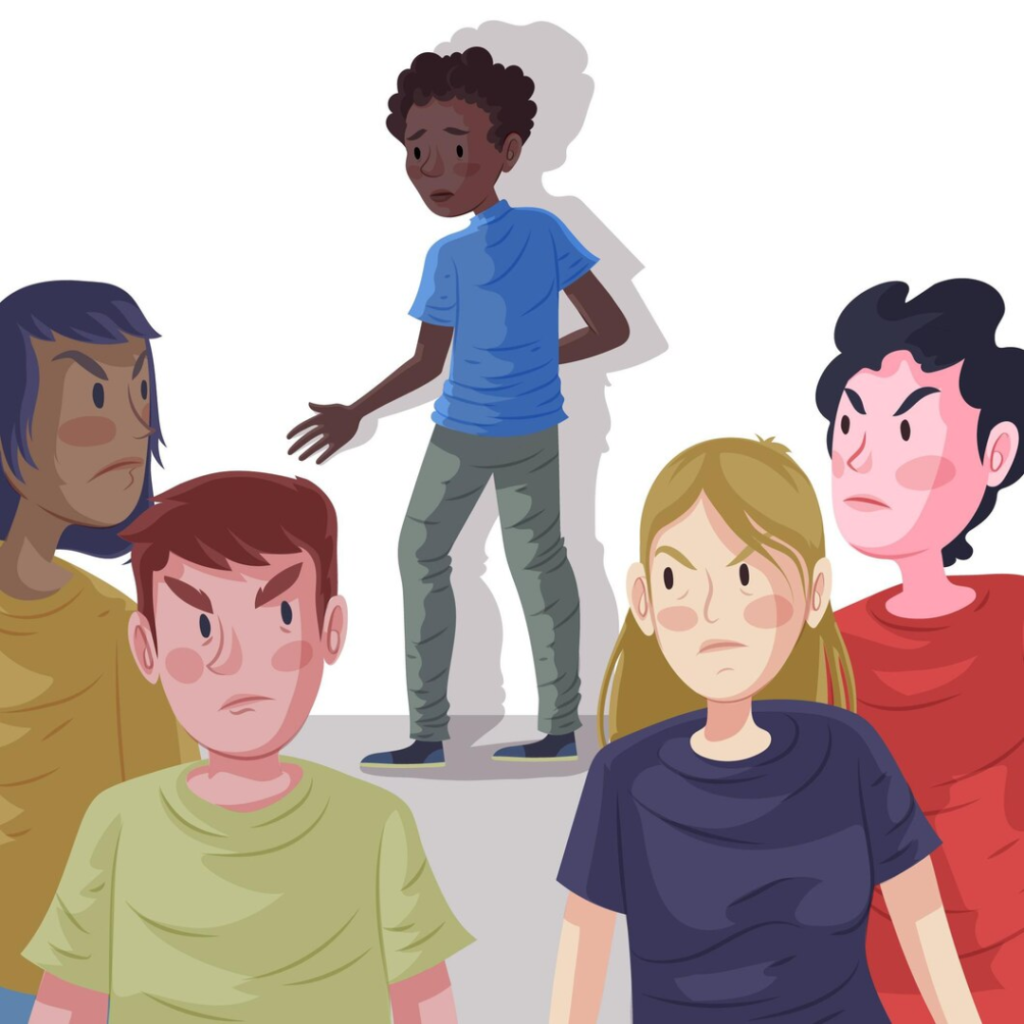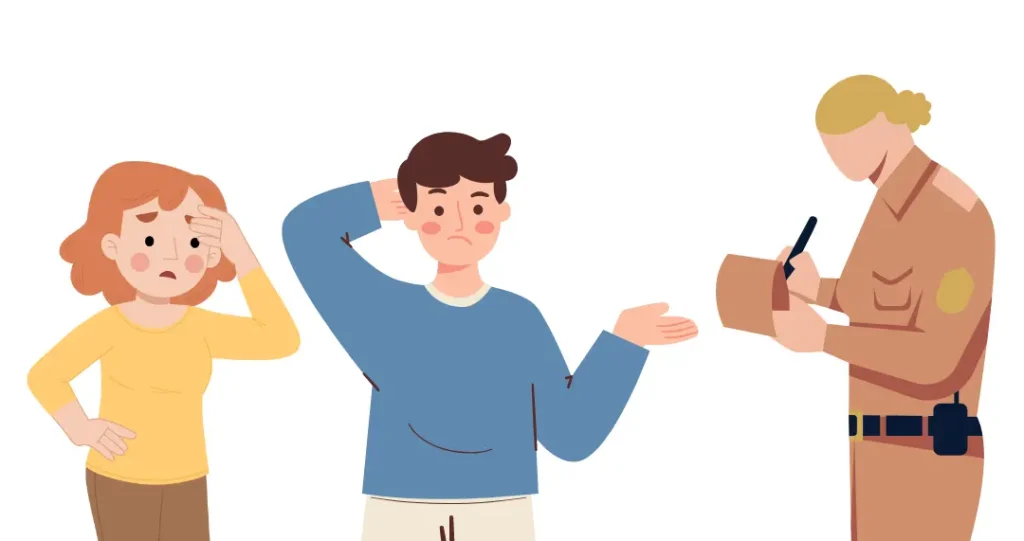“I was overwhelmed by fear of judgment, as society often unfairly blames guys for such situations.”
Child sexual abuse is a profoundly traumatic event that jeopardizes a child’s health, development, and dignity within relationships of trust or authority. While discussions often center on female victims, it is crucial to acknowledge that sexual assault can affect individuals of all genders. However, there remains a significant lack of awareness and support of sexual abuse of boys in India, perpetuated by societal stigma and fear of backlash.
In India, despite hosting 40% of the child population, it ranks as the sixth most unsafe country for children. A study conducted by the Ministry of Women and Child Welfare in collaboration with various organizations revealed alarming rates of child abuse, with 53.22% of children experiencing some form of sexual abuse. Surprisingly, boys accounted for 52.94% of these cases. Moreover, 16% of the men experience child sexual abuse by the age of 18. These statistics underscore the urgent need for increased awareness, prevention measures, and support services to combat male child sexual abuse comprehensively.
How society views sexual abuse of boys?

In a community, each individual is confined to a socially constructed norm/behavior/role & they are expected to behave in a particular way; failing which they are considered alien to the society & when it comes to a gender-based role, they are simply expected to behave in a certain socially acceptable way, else they are considered less of a man / or less of a woman.
When we talk about sexual abuse of boys, the common things boys hear now and then, restrict them from opening up and being vocal about their emotional needs.
Here are some phrases that most boys have heard multiple times in their lives:-
“Boys will be Boys”
It is a common belief in society since the day a boy child is born in a family that they are in general naughtier as a child, even stronger, louder & bolder in their actions, in comparison to their female counterparts. If they conform to this socially acceptable behavior, this social pressure take charge of every situation leading to controlling & dominant behaviors, in a toxic setup, which proportionally relates to their manhood, as they grow up. Additionally, this also teaches men that they are not going to be held accountable for their behavior, as they are just behaving like boys.
This just doesn’t end here!
When a boy brought up in such a setting, faces abuse of any kind, be it physical, emotional or mental, it instills things like domestic violence, sexual harassment & assault are a part of any relationship, as they have known love in this way.
“Ladkiyo ki tarah mat ro, Man up bro!”
As adolescents, not just girls but also boys experience a wide range of emotions. The feeling of sensitivity and vulnerability are considered feminine traits, making it very difficult for a man to speak about how they feel, at any given point.
Children, be it a boy or a girl of this age group, may start developing feelings for the opposite gender in curiosity to discover their sexual self and confine to a cool version, among their peers, which may also result in an unregulated way of exhibiting their sexual self, which might push them in a trap of being an accuser or a victim, if left unnoticed.
While independence and self-reliance are valuable traits, it is essential to recognize that men may need support too as, when emotions are not processed, they come out in or are coped up with unhealthy ways; such as violence, sexually aggressive behavior, alcohol/drugs or simply mental health issues that impact their overall growth and development.
“Men can take care of themselves”
As boys become younger adults, they are expected to become the breadwinners of the family & take up the future responsibilities of the house. While becoming financially & mentally independent, they become programmed to become emotionally independent too. With this upbringing, they are just perceived to be the providers & anything beyond that makes them feel ashamed of their own emotions, which suppresses & invalidates their feelings.
“Mard ko Dard nahi Hota”
With this attitude of gender close-mindedness, they start to feel that softer emotions belong to girls & they might be portrayed as weak, which results in emotionally distant relationships not only with themselves but his partner & his children, in the future.
“Rape is patriarchal”
It is a common belief that men are perpetrators in rape and females are generally victims, as female abuse cases have been more greatly reported & glorified, as compared to men, which has led to this disbelief by a layman that, “men cannot be raped “.
Additionally, most boys feel that they can’t change anything about what happened, even if they could, they won’t be supported, not just by their parents, but also by their version, of themselves, the one which we as a society, have created in their mind. Eventually, it becomes a question of their very own thoughts about masculinity and unfortunately, they are portrayed as somebody who wants attention or simply a joke in such a setup, when they come up with something like Child Sexual Abuse.
Myths about Sexual Abuse of Boys

While patriarchy has traditionally been acknowledged as a source of numerous challenges for women, its impact on men is often overlooked. Surprisingly, it has also perpetuated stereotypes that contribute to male suffering.
- Boys cannot be victims. A direct side effect of being a male in a patriarchal society is being tagged as the “stronger sex,” not realizing that strength and sexual orientation are mutually exclusive to each other. The stone-age phenomenon of viewing men as “alpha” prevents us from seeing them as humans, entitled to feel vulnerable.
- Boys will not report abuse: Another societal stigma that’s a result of patriarchy is the underreporting of child sexual abuse (CSA) by boys. Boys face a dilemma while discussing sensitive topics with friends due to the fear of being misunderstood. Additionally, the lack of shared experiences with peers can lead to feeling isolated. This hesitancy to seek help, fueled by concerns about perceived masculinity, contributes to a cycle of abuse.
- Only effeminate or vulnerable boys are targeted: This stereotype suggests that only those boys who are either too “feminine” or show vulnerability are at a higher risk of becoming targets for sexual abuse. However, this belief is unfounded because perpetrators of sexual abuse do not select their victims based on personality types or perceived vulnerabilities. Instead, they prey on individuals regardless of their appearance, demeanor, or perceived level of strength. This misconception can be detrimental to the well-being of abused boys who do not fit into the stereotype, thereby hindering efforts to identify and prevent instances of sexual abuse.
- Abuse is consensual: This is a common misconception that needs to be debunked. It is a human tendency to experience panic, silence, and profound confusion during moments of horror or shock. It is only natural to feel the same during incidents of CSA, which are unfortunately wrongly interpreted as consent to continue the abuse. This misconception fails to acknowledge the power dynamics that are part and parcel of CSA, wherein perpetrators exploit and manipulate victims, resulting in their confusion and silence.
- You are “lucky” to be abused by a woman: Being abused by a woman is often viewed as a stroke of luck. In such cases, the abused boy is frequently denied acknowledgment as a victim, with society deeming him “fortunate” to have had a connection with a woman.
- Only gay men perpetrate male sexual abuse: The misconception that only homosexual men perpetrate male sexual abuse falsely assumes that sexual orientation dictates one’s capability for abusive behavior. In reality, perpetrators of sexual abuse come from diverse sexual orientations, and their actions are driven by a range of factors that go beyond their sexuality.
- If you experienced sexual abuse, that means you’re gay: Another harmful stereotype suggests that experiencing sexual abuse indicates a specific sexual orientation, such as homosexuality. This assumption implies that male victims of sexual abuse must be gay if the abuser is male. Associating sexual abuse with a particular sexual orientation fosters stigma, shame, and misunderstanding regarding both sexual abuse and the spectrum of sexual identities.
- Abuse does not have long-term effects on boys: Some believe that boys are less affected by CSA compared to girls and that they are less likely to experience long-term psychological consequences. However, CSA can have profound and lasting effects on boys’ mental health, self-esteem, relationships, and overall well-being.
- Boys who experience CSA will become abusers: There is a harmful stereotype that boys who are sexually abused are destined to become abusers themselves. This perpetuates victim-blaming and ignores the complex factors contributing to abusive behavior.
- Sexual abuse only involves physical force: Another myth is that sexual abuse in boys only occurs through physical force or violence. In reality, abuse can take various forms, including grooming, coercion, manipulation, and exploitation of trust.
In conclusion, combating the stereotypes and myths surrounding male sexual abuse demands a multifaceted approach. This includes extensive education, awareness campaigns, professional training, and the establishment of safe environments where boys feel empowered to disclose abuse without fear of judgment or disbelief. Fostering a culture of empathy, support, and understanding is crucial to ensuring that all victims of child sexual abuse (CSA), regardless of gender, receive the necessary assistance and justice.
10 Reasons why sexual abuse of boys is under-reported

1. Underreporting and Delayed Reporting – Male child sexual abuse is often underreported as men feel immense shame about being a victim of sexual abuse. Only 26% of those with known histories have come forward to date. Sometimes delayed reporting is because of a lack of awareness about the procedure of reporting. There’s a fear of misinterpretation that works in men, they feel that their experiences might get misinterpreted.
2. Dismissive Society- “Mard ko dard nahi hota” – Society tends to be more dismissive of male child sexual abuse due to patriarchal values that emphasize protecting girls, leaving boys vulnerable and overlooked. Boys are always taught that they must not feel pain, they must be stoic, tough enough and should be unaffected by what pain they are going through physically or emotionally. Our society has always taught men that they should suppress their emotions and show their aggression, that’s what masculinity is, thus, it becomes very difficult for a male victim to express his experiences openly in the fear of getting judged.
3. Misconceptions about Offenders – There is a common misconception that all adult sexual offenders were abused as children, but only 50% of child molesters have a history of childhood abuse, cautioning against generalizations. Another very frequently known misconception is that most of the perpetrators are strangers or outside people. Apart from these, it is also accepted that offenders in child sexual abuse of boys are always men.
4. Confusion in Sexual Orientation – Unlike females who are often abused in a heterosexual context, males tend to be abused by men, confusing the victim’s sexual orientation, with many doubting if they are homosexuals. The abusers try to manipulate the victims about their understanding of sexual orientation. If the victim is abused by a male, confusion arises in the mind of the victim regarding his own sexual identity. The victim later questions himself about his identity and it also leads to a sense of shame in the victims about themselves.
5. Hidden Nature of Abuse – Child protection services show a disparity, with more girls utilizing services than boys, leading to the “iceberg phenomenon” where sexual abuse of boys cases remains hidden and underestimated. It explains the fact that the problem is quite big but only a small portion of it visible. As already stated earlier very few cases are being filed and most of the cases are unknown. The social stigmas, stereotypes associated with it and also impractical masculinity, all lead to the underreporting of such male abuse cases. Lack of a supportive environment, and family, all contribute to this Iceberg phenomenon in male abuse cases.
6. Social Expectations on Boys – Growing up, boys often feel pressured to fit into traditional gender roles, discouraging them from showing vulnerability or reporting abuse. A study in India revealed that over half of children experience some form of sexual abuse, with boys making up a significant portion. Unfortunately, society tends to downplay male child sexual abuse, influenced by traditional beliefs and a misguided sense of chivalry toward protecting girls. Boys are expected to toughen up and not express emotions, contributing to a culture of ignorance around male victims. The stigma surrounding male child sexual abuse is fueled by cultural myths, making it challenging for boys to speak out.
7. Toxic Masculinity – The expectation for boys to be strong and tough leads to toxic masculinity, where emotional expression is discouraged. In India, alarming statistics show that a significant number of boys face sexual abuse, yet their experiences often go unnoticed. Society’s dismissive attitude towards male victims is rooted in patriarchal norms. Boys are taught to be “men” and not to cry, sometimes through corporal punishment. The stereotype that men can’t feel pain contributes to a dark secret around male rape, discouraging victims from speaking up due to fear and societal pressure.
8. Rape Perception – A common belief links rape exclusively to women, creating a dark secret around male victimization. Stereotypes associating rape primarily with females marginalize and neglect male survivors. This misperception hinders recognizing and understanding male victimization, perpetuating a culture of silence. Breaking this belief is crucial for fostering an inclusive understanding of sexual violence and supporting all survivors.
9. Presumed Strength of Men – The enduring belief that men are always strong poses challenges in acknowledging them as victims of sexual assault. Society expects men to embody strength and toughness, leading to widespread ignorance and victim-blaming. Breaking this stereotype is crucial for dismantling barriers preventing male survivors from openly discussing their traumatic experiences and recognizing their vulnerability.
10. Stigma and Shame – The stigma surrounding male child sexual abuse creates an atmosphere where victims fear disclosing their experiences due to shame, self-blame, and judgment. Overcoming this stigma is essential for fostering an understanding and supportive environment. Male victims need to feel empowered to break their silence and seek healing without facing societal negativity. Breaking through these stereotypes and myths is crucial for fostering a society that supports all survivors of sexual assault.
To know how to prevent sexual abuse of boys, stay tuned for our next blog at our Blog Section.

Galat toh galat h chaye wo kisi ke sath bhi ho …hum hmesha apni daughter ki safety ki baat krte h …but jo aaj ye topic pr aapne baat ki acha laga …thankyou and I feel privileged to be a part of bachpan team ♥️